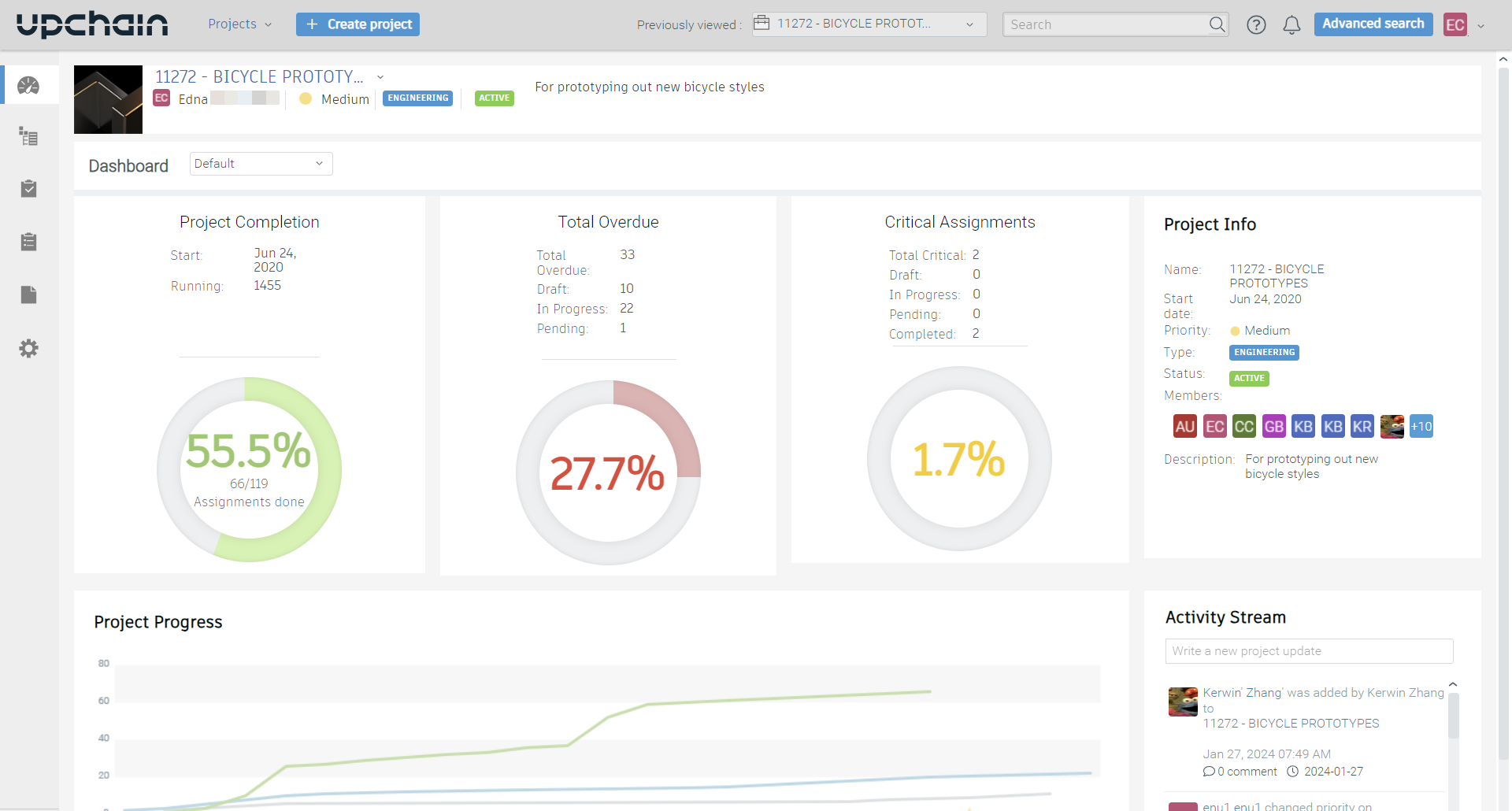About projects
Projects are used to organize and manage the effort and data related to your product's lifecycle within Upchain. They enable you to easily track statuses and due dates, while having all your information in one place.
Projects are flexible and may be used in a variety of ways. Most commonly, a project will contain one or more products to be delivered to a customer. Additionally, a project could be used strictly as a library of standard documentation widely-used within your organization, or a library of standard parts to be shared across other projects.
Importantly, whenever you access or edit data in Upchain, you do so in the context of a project. You cannot begin working with Upchain or upload any data until you have at least one active project.
Project types
There are three default project types in Upchain:
- Engineering – for tracking engineering activities and CAD design throughout a product’s entire project lifecycle.
- Build to Print – for managing and producing products according to a customer’s exact specifications.
- Design Project – for designing products from scratch and tracking all the changes.
You may also create a project template to make it easy to reuse a set of bill of materials items, documents, or team members whenever you create a new project. Click to learn more.
Your Tenant Administrator may also create custom project types. Click to learn more.
The project interface

The project header
The project header shows information about the project, including project image, number, name, creator, priority, type, status, and description.
The project sidebar
The project sidebar contains tabs for accessing each part of the project: Project dashboard  , Bill of materials (BOM)
, Bill of materials (BOM)  , Project management
, Project management  , Business processes
, Business processes  , Documents
, Documents  , and the Project settings
, and the Project settings  .
.
